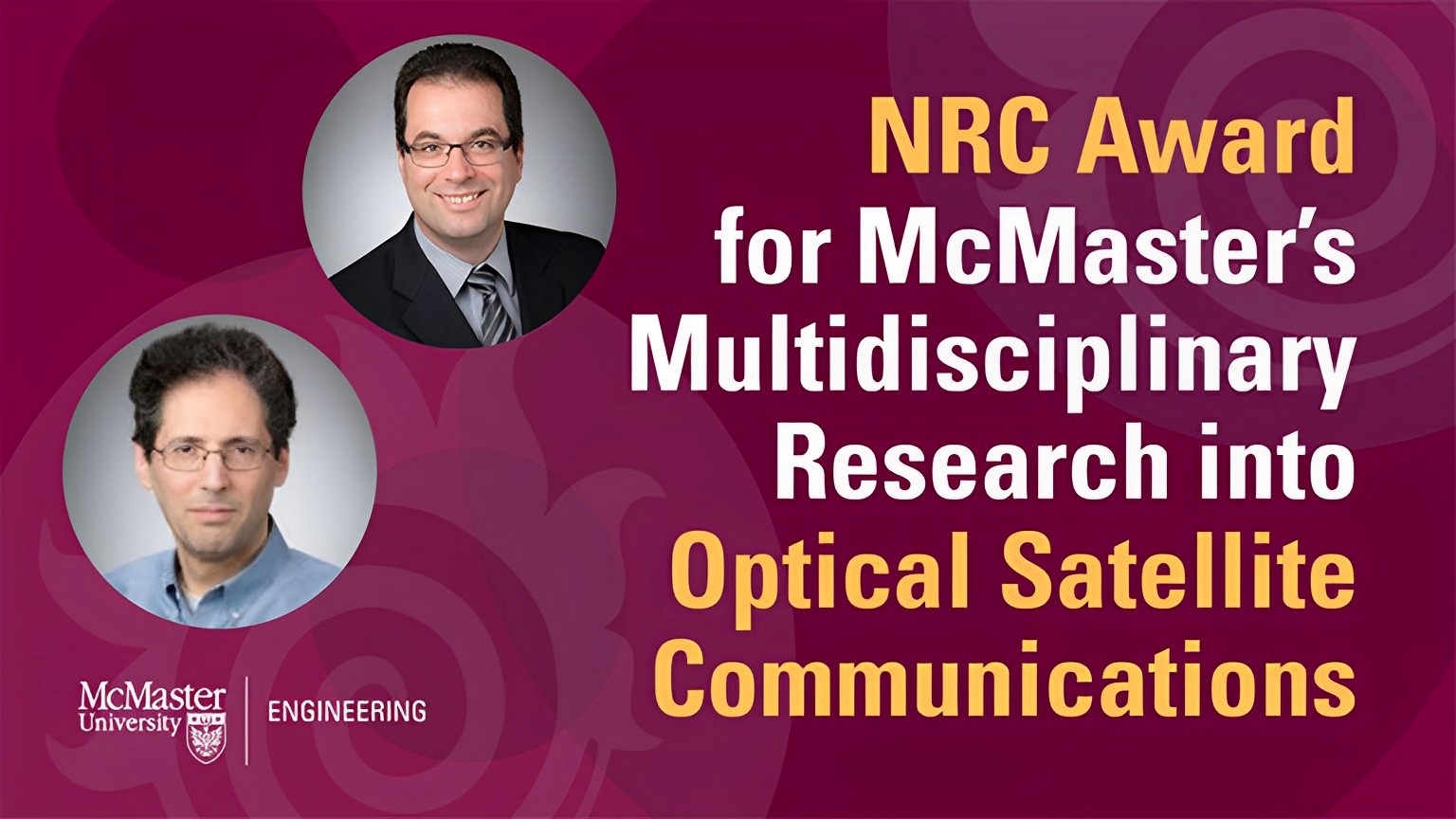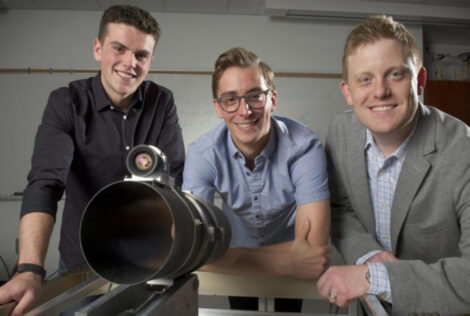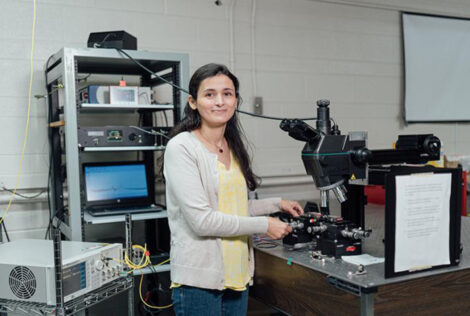

McMaster Engineering researchers have been awarded nearly $1 million in funding to continue work that aims to enable broadband optical communications through the atmosphere.
Developing technologies to deliver secure, affordable, high-speed internet service to every part of Canada is the focus of National Research Council’s High-throughput and Secure Networks Challenge program. Among the most promising technologies is optical satellite communication.
“Optical satellite communications allow data to be sent wirelessly between satellites, and to the ground via optical laser links,” explains Steve Hranilovic, professor of Electrical & Computer Engineering (ECE). “The pandemic has highlighted the need for broadband data connections across Canada’s vast geography, including in underserved northern, remote and rural communities.”
Since 2019, McMaster researchers have been contributing leading research in optical satellite communications to a national consortium working to enable broadband optical communication through the atmosphere.
Hranilovic, who has been working on optical wireless links for several decades, represents McMaster on the national Optical SatCom Consortium and leads the project. But he emphasizes the collaborative approach to the challenge.
“Tackling such a large problem requires a multidisciplinary approach,” says Hranilovic. “We are all working collectively to push forward this technology.”
“Researchers from ECE and Engineering Physics are working on key technology pieces to build these SatCom links – from lasers to receivers to optics to communication algorithms – to tie everything together.”
The latest round of NRC awards will support four research projects at McMaster, with up to $249,999 in funding for each of them.
Research by Hranilovic and Engineering Physics professor Rafael Kleiman is developing new systems to combat the impact of the atmosphere on optical signals transmitted through the air.
“Turbulence in the air can cause optical signals to fluctuate unpredictably, much like stars twinkling in the evening sky, making data reception unreliable,” explains Hranilovic. “Our technique will undo that twinkling so you can have a stable communications link.”
The other three technology projects in the consortium that received awards:
- Next Generation Light Sources for Optical SatCom (Chang-qing Xu, Ryan Lewis, Ayse Turak, Eng. Physics)
- Optical Beam Forming for RF Phased Arrays (Andy Knights, Jonathan Bradley Eng. Physics)
- Receivers for Optical Satellite Communications (Ray LaPierre, Chang-qing Xu, Eng. Physics; Shiva Kumar, Jamal Deen, ECE)


